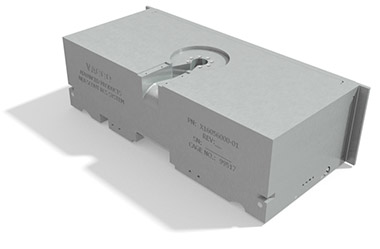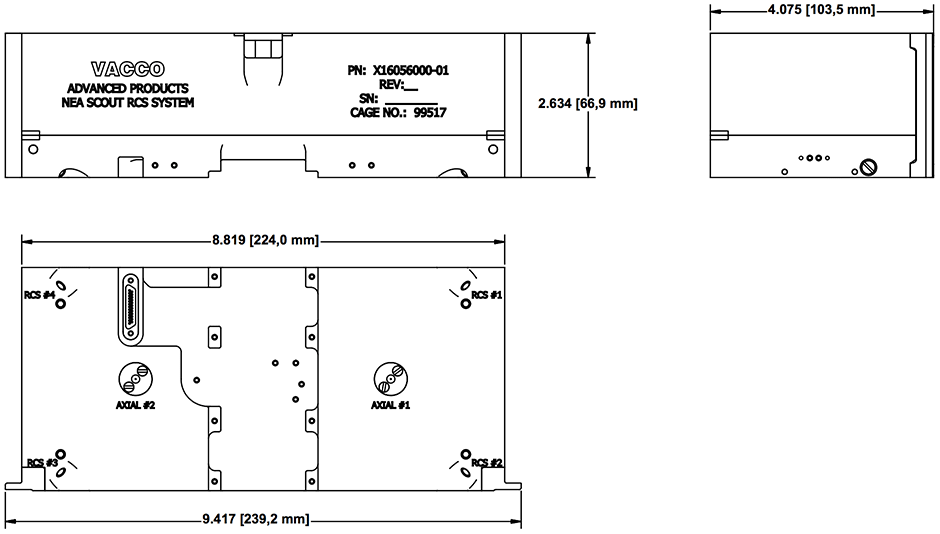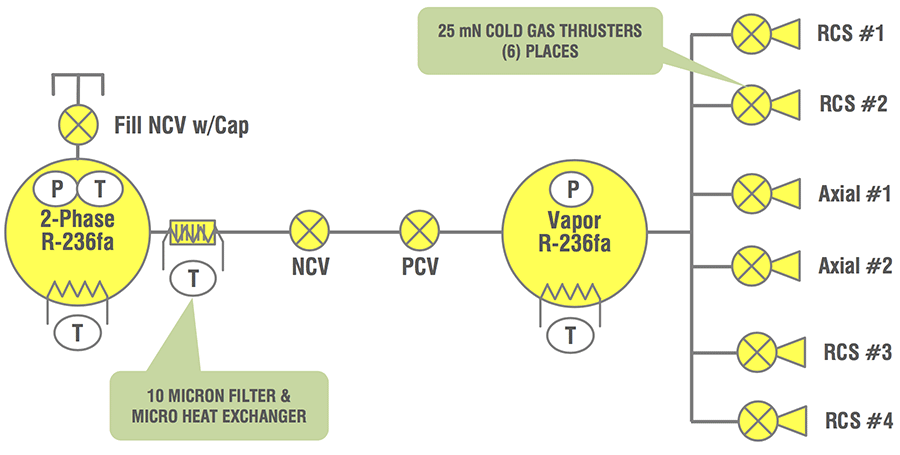Performance density: 322 N-sec/L

VACCO’s cold gas Micro Propulsion System (MiPS) provides attitude control and orbital maneuvering. NASA’s NEA Scout program utilizes VACCO’s cold gas system to achieve highly reliable propulsion while observing an asteroid.
The VACCO NEA Scout MiPS is approximately 2U in volume and uses six 25 mN cold gas thrusters to develop 500 N-sec of total impulse that provides 37 m/s of delta-V for a 14 kg CubeSat. Each thruster independently operates to perform both delta-V and ACS maneuvers through an integrated microprocessor controller.
Features
- Integral aluminum fluid control manifold and low friction, space grade valves
- All welded tank construction contains 1,280 g of propellant
- Integrated microcontroller and RS-422 interface enable high-level commands from the host spacecraft
- Low power with < 1 Watt for health and status monitoring
- Easily configured for different propellants
- R-134a
- R-236fa
- Performance density: 322 N-sec/L








